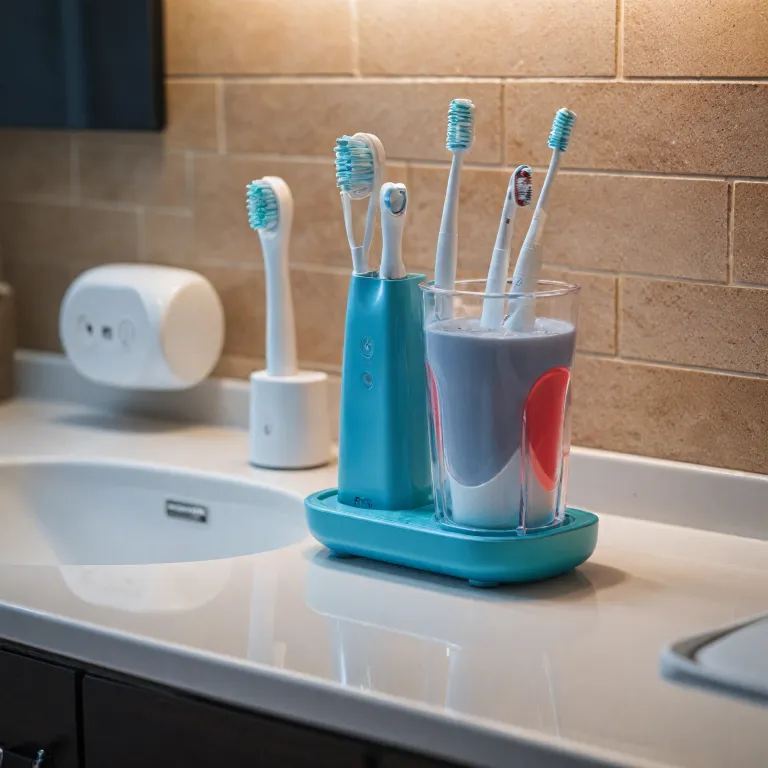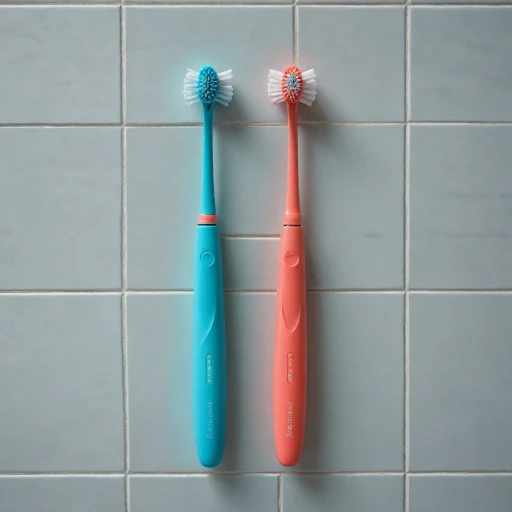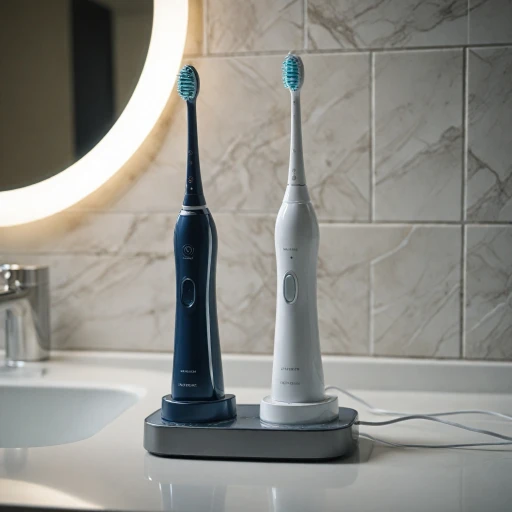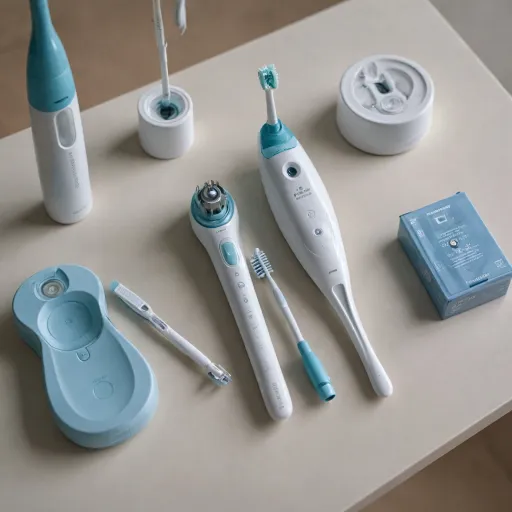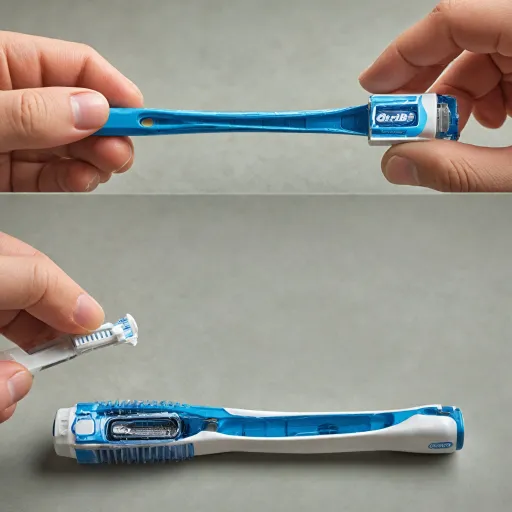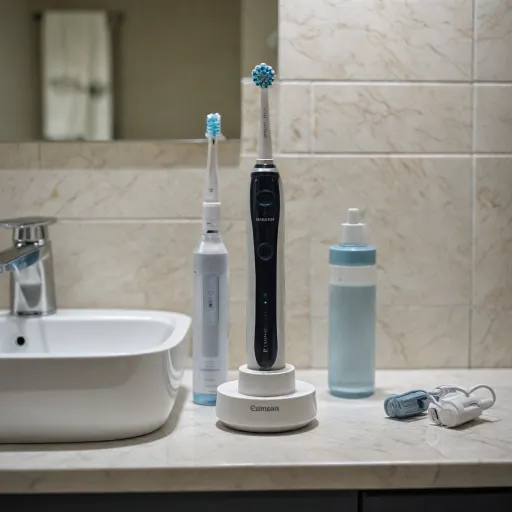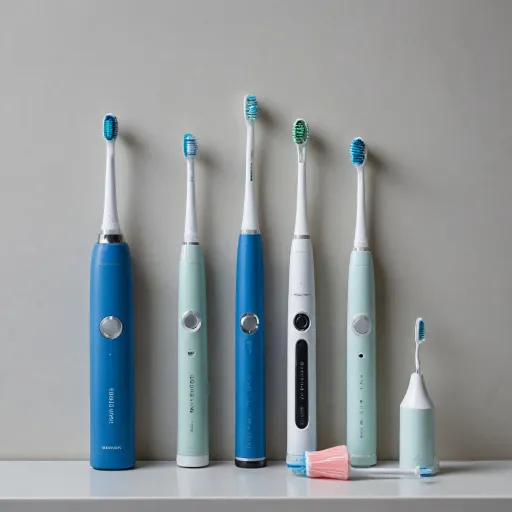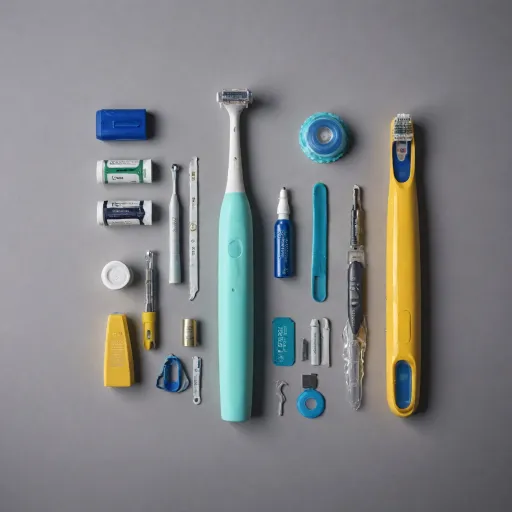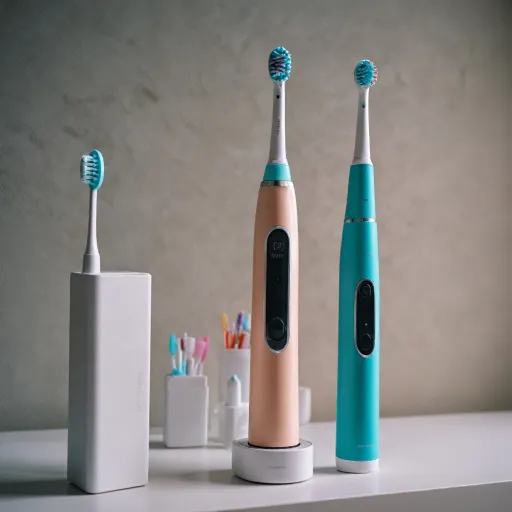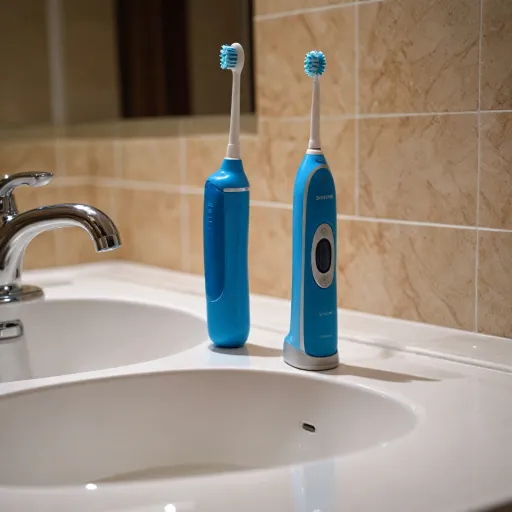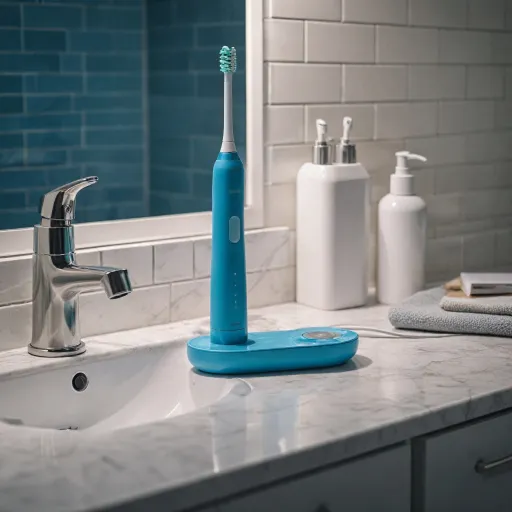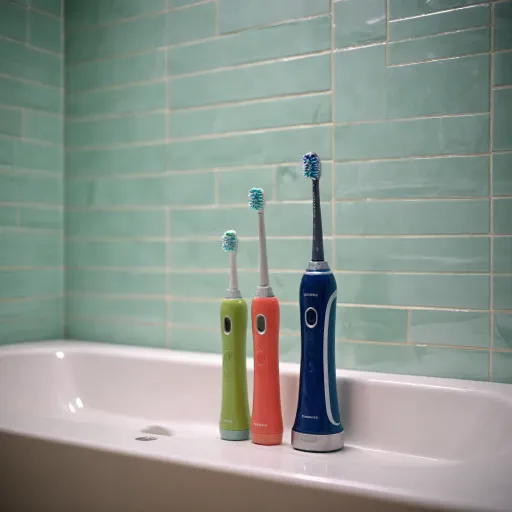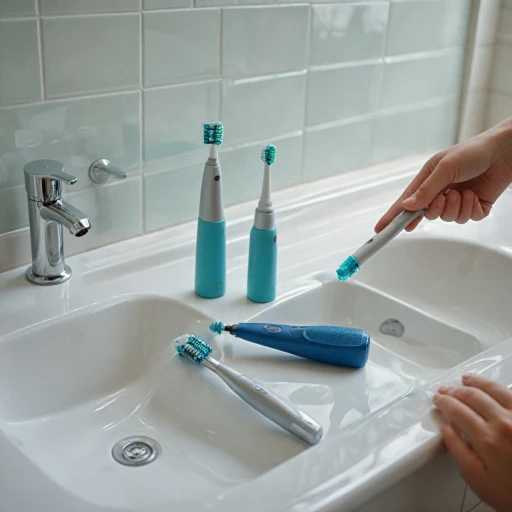
Understanding the Charging Mechanism
Exploring the Basics of Power Transfer
At the heart of your Philips Sonicare electric toothbrush’s functionality is its charging mechanism. This essential component keeps your device ready for use, ensuring your oral hygiene routine is unhampered by unexpected power loss. Understanding how this charging system operates can be pivotal when facing issues, such as your sonicare toothbrush not charging properly.
Inside the Charging Mechanism
The typical charging process for an electric toothbrush like the Philips Sonicare involves placing the toothbrush on its charger. The power from the charger transmits through the bottom handle via induction, a wireless method of power transfer. In essence, the charger sends energy to the battery within the handle without the need for a direct electrical connection.
The process begins when you place your toothbrush on the charger base. No complicated connections are needed—just ensure that the bottom toothbrush handle aligns correctly with the charger. If all is working well, you should see the battery light indicator on the charger or handle, signaling that the toothbrush is indeed charging.
The Role of the Battery and Charger
A healthy battery and a properly functioning charger are both crucial. Over time, these components can become faulty, causing issues like the battery failing to charge or the charger not working. In some cases, understanding the battery life of Oral-B electric toothbrushes might give insight into what to expect from your Sonicare device as well.
Maintaining your toothbrush involves more than just turning the power button on and off. Regularly check both the brush head and handle for damage, keep the charger free of water, and make sure it’s correctly plugged into a working wall outlet. In time, you may need to consider replacing the battery if it’s no longer holding charge efficiently.
Common Reasons for Charging Failures
Identifying Common Causes for Charging Hiccups
When your Sonicare toothbrush encounters charging issues, it can be frustrating. To tackle these problems effectively, it's crucial to understand the potential culprits. Firstly, inspect the charger itself. Is the toothbrush charger working as expected? A frayed wire or damaged plug could be the reason why the battery isn’t charging. Ensure that the charger is properly secured to the wall and the power is on. Next, take a look at the toothbrush handle. Over time, debris or water can accumulate at the bottom handle, affecting the connection between the toothbrush and the charger. Gently cleaning with warm water while holding the brush can sometimes solve the issue. The battery might also be to blame. As with any battery toothbrush, a faulty battery could mean the power button remains unresponsive, or the battery light fails to indicate charging. Considering the frequent use of electric toothbrushes, the battery will diminish over time. Replacing the battery might be necessary if the charge fails to hold. Furthermore, consider the brush head and the placement of the toothbrush on the charger. If the toothbrush head is not positioned correctly, it can interfere with the charging process. Ensure you place the toothbrush correctly and it aligns with the charger attachments. Lastly, internal malfunctions can't be overlooked. Electronic components within the Philips Sonicare toothbrush might need a reset if they’re causing an issue. Sometimes, a simple reset by pressing and holding the power button can reestablish the toothbrush's functionality. For a more comprehensive understanding of battery longevity and maintenance, you might want to explore the battery life insights of similar electric toothbrush models and apply them to your Sonicare.Troubleshooting Steps to Diagnose the Problem
Identifying the Exact Issue with Your Toothbrush
When your Sonicare toothbrush stops charging, it can be perplexing. However, before panicking, it's wise to systematically diagnose the problem that might be causing your toothbrush charging issues. Let's go through some practical troubleshooting steps that could help you address and potentially resolve the problem.- First, inspect the power button and ensure there are no stuck debris hindering its function. A jammed button could prevent the device from charging properly.
- Next, make sure the charger is working. Sometimes, the issue lies with the charger itself rather than the toothbrush. Test it by connecting another device to the same socket, or try another electrical outlet.
- Verify the placement of your toothbrush on the charger. Make sure it's seated correctly; any misalignment might hinder the charge. Place the Sonicare toothbrush on a flat surface, ensuring the charging light indicator at the bottom of the handle flashes.
- Examine the battery light. A blinking or non-illuminated light while charging could indicate a faulty battery. Observe any patterns, like blinking, that might hint at specific issues.
- Try resetting the toothbrush by holding down the power button for roughly 10 seconds. This might reset any minor glitches.
- Be mindful of water exposure. If water seeps into the charging port, it can cause issues with the charger and overall functionality of the device. Always keep the brush dry and wipe it with warm water after use to maintain hygiene.
- Finally, examine the toothbrush handle for any cracks or damages which might impede charging. If the handle is compromised, power flow might not reach the battery effectively.
DIY Fixes for Charging Issues
Simple Fixes for Your Toothbrush Charging Problems
If your electric toothbrush isn’t charging properly, some DIY fixes might help restore its functionality. Here are a few tips to get your Sonicare toothbrush back in action.- Inspect the Toothbrush Charger: Firstly, ensure that your charger working properly. Test the charger on a different outlet or swap it with one that you know works to rule out issues with the power source.
- Clean the Handle and Brush Head: Sometimes, residue can build up on the bottom of the toothbrush handle and affect charging. Clean the handle and brush head with warm water, gently wiping away any debris or toothpaste.
- Reset Your Sonicare Toothbrush: Resetting your battery toothbrush can sometimes solve charging issues. To do this, press and hold the power button for 10 seconds until the light flashes. This process can clear any minor glitches.
- Check the Charging Light: Pay attention to the battery light when you place the toothbrush on the charger. If the light doesn’t illuminate, the battery will not be charging. This may require checking both the toothbrush and the charger.
- Adjust the Position: Make sure you place the toothbrush correctly on the toothbrush charger with the bottom handle properly aligned. A misplaced brush won't charge efficiently.
- Dry the Charging Area: Wipe the charger base and the bottom of the handle dry. Water around the charger can interfere with the charging process.
When to Seek Professional Help
Recognizing When Professional Assistance is Necessary
While many charging issues with your Philips Sonicare toothbrush can be resolved with some DIY troubleshooting, there are times when seeking professional help is the best course of action. Here are some scenarios where expert intervention might be necessary:
- Persistent Charging Problems: If your toothbrush continues to have charging issues despite trying all troubleshooting steps, it may indicate a deeper problem. This could be related to a faulty battery or a malfunctioning charger.
- Physical Damage: Any visible damage to the toothbrush handle or charger, such as cracks or water ingress, should be assessed by a professional. Attempting to fix these issues yourself might worsen the damage.
- Battery Replacement: If the battery light on your toothbrush is not functioning correctly or the battery will not hold a charge, it might be time to consider replacing the battery. A professional can ensure the replacement is done safely and correctly.
- Warranty Considerations: If your Sonicare toothbrush is still under warranty, attempting DIY fixes might void it. In such cases, it's advisable to contact Philips or the retailer for support.
In these situations, reaching out to the manufacturer or a certified repair service can save you time and prevent further damage to your electric toothbrush. Remember, while DIY solutions can be effective, they are not always the safest or most reliable option for every problem.
Preventive Measures for Future Charging Problems
Tips to Avoid Charging Problems in the Future
To keep your Sonicare toothbrush in optimal working condition and prevent charging issues, consider the following helpful tips:- Routine Cleaning: Regularly clean the bottom handle and charger area. Ensure both are free from water, debris, and toothpaste residue, which can affect charging ability.
- Proper Placement: Always place your toothbrush correctly on the charger. The charger will only work effectively if the toothbrush is in the right position. Align the bottom of the toothbrush with the charger base to make sure the charging light activates.
- Secure Power Source: Make sure your charger is plugged into a reliable power outlet. Avoid using surge protectors or extension cords as they may deliver inconsistent power, affecting the charging process.
- Battery Care: Avoid letting the battery fully deplete too frequently. Occasionally let the battery run down completely, then recharge it fully again. It helps maintain good battery health over time.
- Use Official Chargers: Utilize a Philips Sonicare-approved charger to ensure compatibility and safety. Mismatched chargers might not provide the right power, leading to ineffective charging.
- Avoid Moisture: Keep your charger and toothbrush handle dry. Excessive water exposure can lead to charging malfunctions or potential damage to internal components.
- Replace Faulty Batteries: If you notice the charge doesn't last as long as it used to, the battery may be failing. Consider replacing the battery or the entire toothbrush if the battery is not changeable.
- Be Gentle with the Power Button: Avoid pressing the power button with excessive force, as this can result in wear and tear over time. A working button ensures connectivity during charging.
